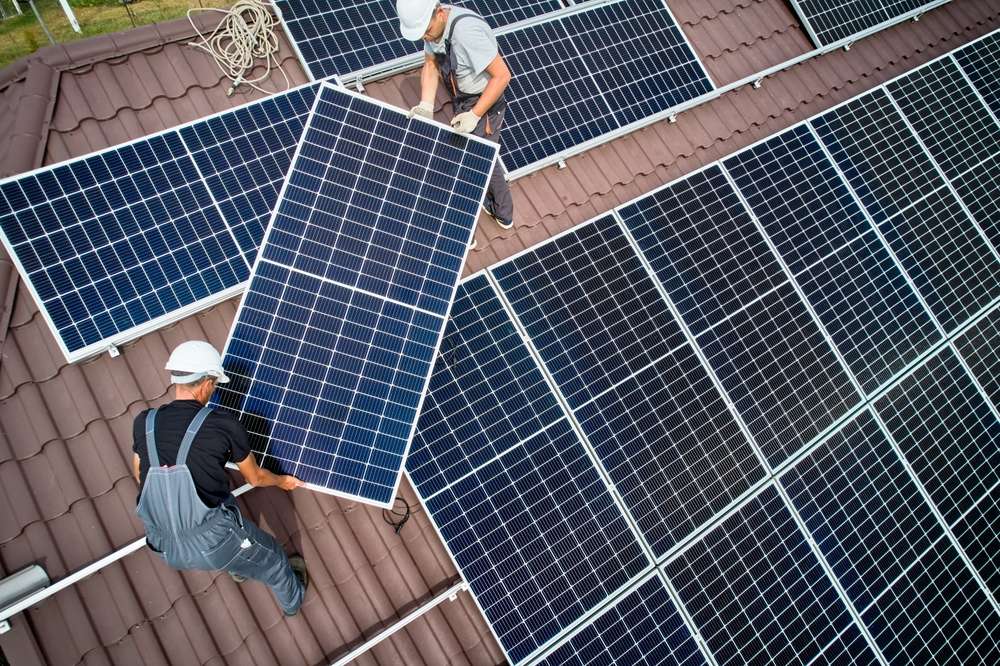Solar Roof Guide: Solar Tiles vs. Panels for Your House
A solar roof can transform how a house captures sunlight and delivers solar energy while also changing the look and structure of your roof. Whether you’re considering integrated solar tiles or traditional solar panels, understanding performance, durability, installation, and long-term value helps you make a practical choice. This guide clarifies what each option offers and what to expect for a residential installation.

What are solar tiles and how do they work?
Solar tiles (sometimes called solar shingles) are building-integrated photovoltaic materials designed to replace conventional roofing materials while generating electricity. Unlike mounted solar panels, solar tiles are installed flush with the roof surface, creating a continuous appearance. They convert sunlight into electricity through embedded photovoltaic cells. Because they double as roofing, they require careful planning for underlayment, flashing, and proper waterproofing to match the function of a standard roof.
Solar tiles suit homeowners prioritizing aesthetics and a seamless roofline. They may have lower per-square-foot efficiency than high-efficiency framed panels because they balance appearance and electrical output. For this reason, roof layout, pitch, and shading influence whether solar tiles can meet a household’s full energy needs.
How does a solar roof compare to solar panels?
Solar panels are mounted modules attached to racks above the roof and typically deliver higher efficiency and easier serviceability. Panels are often less expensive per watt, straightforward to replace, and available in a wide range of performance levels. A solar roof with integrated tiles, by contrast, provides a cleaner look and combines roofing and energy production, which can be appealing for steep-slope or historic homes.
From a maintenance perspective, panels allow easier access for cleaning, repairs, and upgrades. Solar tiles reduce visible hardware and may increase curb appeal, but repairs or replacements can be more complex because they’re part of the roof assembly. The choice often comes down to priorities: maximum energy return and cost-efficiency (panels) versus integrated aesthetics and roofing replacement combined (solar tiles).
Can solar energy power an entire house?
Solar energy can power a whole house, but whether a particular system will cover all needs depends on consumption patterns, system size, and local sunlight. A well-sized array of solar panels or a full solar roof can offset most or all grid electricity use in many climates, especially when paired with energy-efficient appliances and smart usage habits. Battery storage can capture excess daytime production for evening and outage resilience.
To estimate coverage, homeowners should compare their average monthly kilowatt-hour use with projected annual production from a proposed system. Factors such as roof orientation, tilt, shading from trees or nearby structures, and local weather patterns will significantly affect output. Professional site assessment and modeling provide the most reliable predictions.
Will a solar roof affect my existing roof?
Installing a solar roof can either replace existing roofing materials (in the case of solar tiles) or overlay them (common with solar panels). If your roof is near the end of its useful life, integrating solar tiles during a roof replacement can be efficient because the work is coordinated. However, retrofitting tiles over an old roof is uncommon; installers typically require that roof decking and underlayment are sound before integration.
For solar panels, installers often add mounting hardware that penetrates the roofing membrane, which requires precise flashing and sealing to prevent leaks. Both approaches should include evaluations for structural loading and roof condition. A thorough inspection by a licensed roofing and solar professional helps ensure the roof will remain weather-tight and that warranties stay valid.
Finding local services for solar roof installation
When looking for local services in your area, seek companies that demonstrate experience with both roofing and photovoltaic systems, strong warranties, and transparent permitting processes. Qualified installers should provide a site assessment, production estimates, and an explanation of how the installation ties into your roof, electrical panel, and any battery storage. Verify licenses, insurance, and customer reviews to gauge workmanship and after-sales support.
Ask potential providers about roofing warranties, PV performance guarantees, and who handles maintenance or repair work years after installation. Local installers familiar with municipal permitting and utility interconnection rules can streamline the process and avoid costly surprises.
Conclusion
Choosing between solar tiles and traditional solar panels involves trade-offs among appearance, efficiency, cost, and maintenance. Solar tiles offer a seamless roof aesthetic and integrated roofing replacement, while solar panels typically deliver higher efficiency and simpler servicing at lower upfront cost per watt. Assess your roof condition, household energy use, and long-term priorities, and consult experienced local services to determine which solar roof approach best fits your house and lifestyle.






